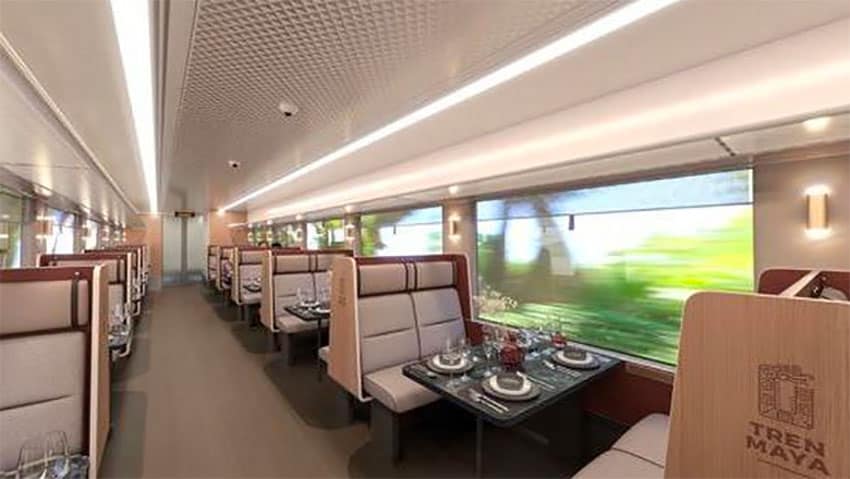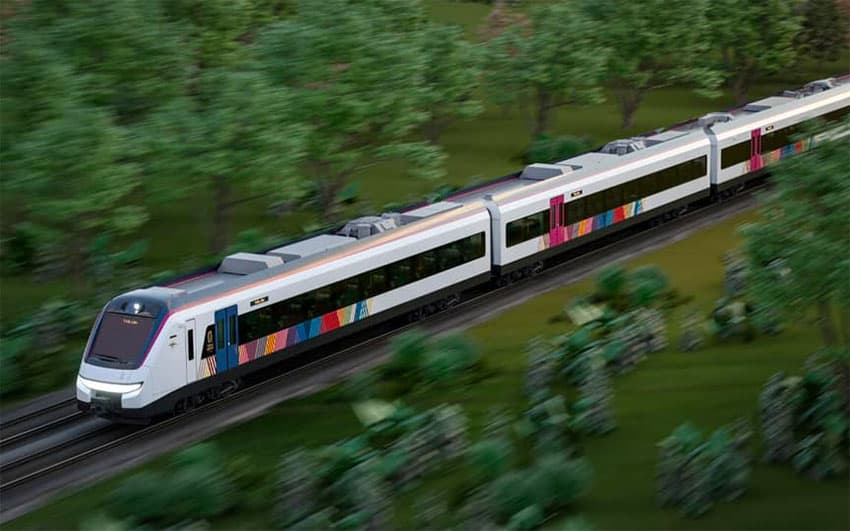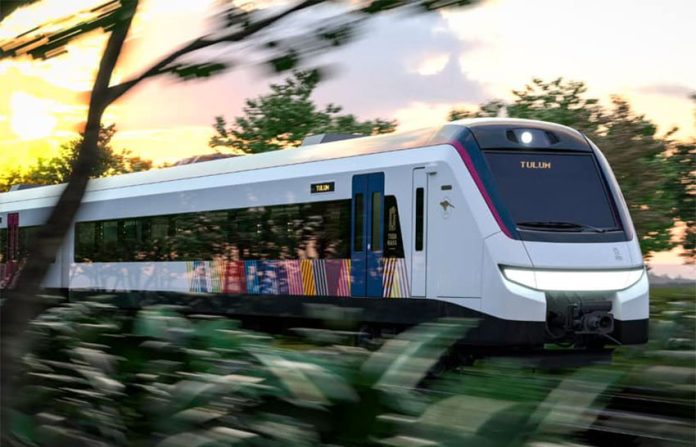The federal government announced this week that a consortium led by the Mexican subsidiary of Bombardier Inc. was the successful bidder in an international tendering process for the acquisition of rolling stock and rail systems for the Maya Train railroad in Mexico’s southeast.
The National Tourism Promotion Fund (Fonatur) said in a statement that the consortium submitted a bid of 36.6 billion pesos (US $1.84 billion) to supply rail systems and 42 trains. Thirty-two trains will be electro-diesel, and 10 will run solely on diesel.
The winning bid was 890 million pesos (US $44.6 million) lower than the second-lowest offer, and the consortium that submitted it achieved the highest score among seven participants in the process, according to Fonatur, which is managing the construction of the 1,500-kilometer tourist, public transit and freight railroad.
Fonatur said the consortium will design and manufacture 42 trains and build infrastructure including train control centers, maintenance workshops and depots. Testing of the trains will begin in 2023.
Fonatur chief Rogelio Jiménez Pons said Friday that the government will later acquire 57 more trains from the same consortium. They will be purchased as demand for travel on the railroad increases, he told reporters at the president’s press conference, adding that it will begin operations in December 2023.

President López Obrador said a lot of the work to manufacture the trains will be done in Ciudad Sagahún, Hidalgo.
“This is good news because it’s an investment of about 36 billion pesos and a lot of jobs will be created,” he said.
Jiménez said the different trains that operate on the railroad will have Mayan names. Trains offering short, regular services for locals will be called xiinbal, which means “walk,” special “restaurant trains” will be known as janal, which means “eat” and trains covering long distances will be called p’atlal, which means “stay,” he said.
“… It’s estimated that in the first years [of operation] a [regular service] train will be leaving Cancún every 15 minutes and later the number of wagons and frequencies will increase,” Jiménez said.
“… This is the type of train that will have a restaurant,” the Fonatur chief said as images of the janal were projected on a screen behind him.
“… There is great gastronomic wealth in the southeast, imagine … 10 restaurant trains, which is the number being ordered, offering food from Yucatán, Campeche, Chiapas, Tabasco …”

López Obrador says the construction and operation of the US $7.8-billion railroad will spur economic and social development in Mexico’s southeast but the project is not without its critics. Several indigenous communities have filed legal action against the project on environmental grounds, while some Maya oppose it because they believe it will bring few economic benefits to impoverished residents.
“It’s not planned for us, the common people. It’s a tourism project that will only benefit the wealthy and foreigners. We, the owners of the land, will only see the train pass by because there will be no stations in the majority of our towns. … Our communities will only see the destructive part of the project,” a collective of indigenous groups said.
The same collective also challenged the name of the project, declaring that “there’s nothing Mayan about it.”

Mexico News Daily
